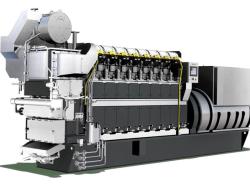
OR WAIT null SECS
© 2024 MJH Life Sciences™ and Turbomachinery Magazine. All rights reserved.
NULL
By Neetin Ghaisas
The monitoring instrumentation required for different types of rotating and reciprocating equipment can be tabulated. American Petroleum Institute (API) industry standards which govern the specification and design of machinery have been used to formulate this table.
Click here to open a pdf file of the table.
The information presented concerns vibration, axial position, temperature and speed -related monitoring instrumentation and suggested alarm, shutdown functions. Control panels, auxiliary or support systems and protective systems including process instruments are not included.
The guidelines should serve the purpose of providing a base scope for minimum monitoring instrumentation to the users. These will also help in specifying a manufacturer’s standard packaged equipment which will be consistent with Purchaser’s instrumentation requirements. Likewise, the guidelines can be useful in the front end design phase of a project for preliminary estimation of I/O counts for rotating and reciprocating machines.
By defining the instrumentation requirements in the design stage, the engineering contactor can establish essential interfaces for the packaged equipment and develop preliminary process and instrumentation diagrams (PIDs) for monitoring instrumentation. In the engineering design and proposal stages, these drawings can be reviewed with the potential suppliers to determine interface signals and to understand how the machinery train will be protected. Another benefit lies in getting an appreciation of the size and number of monitoring instrumentation racks in the control room.
Neetin Ghaisas, M.E., P.Eng. is a Director of Design Engineering at Fluor Canada’s Calgary office. He possesses more than twenty-eight years of professional background with significant experience in the specification, selection, application, and troubleshooting of rotating equipment.



